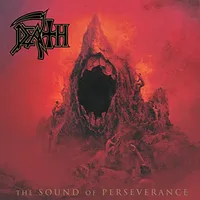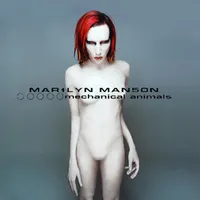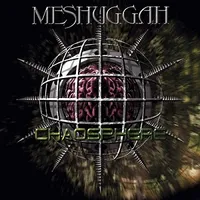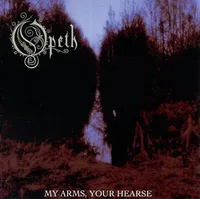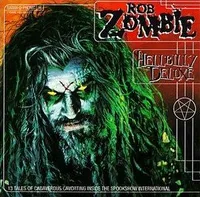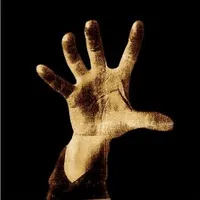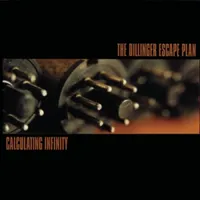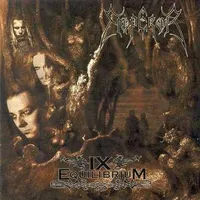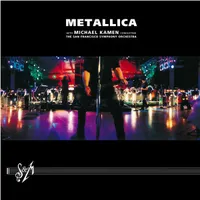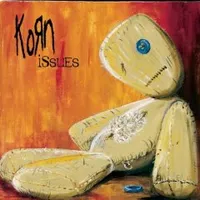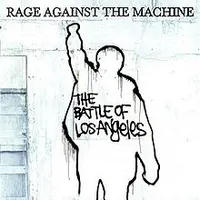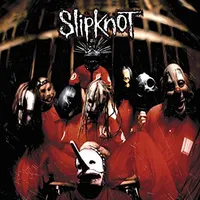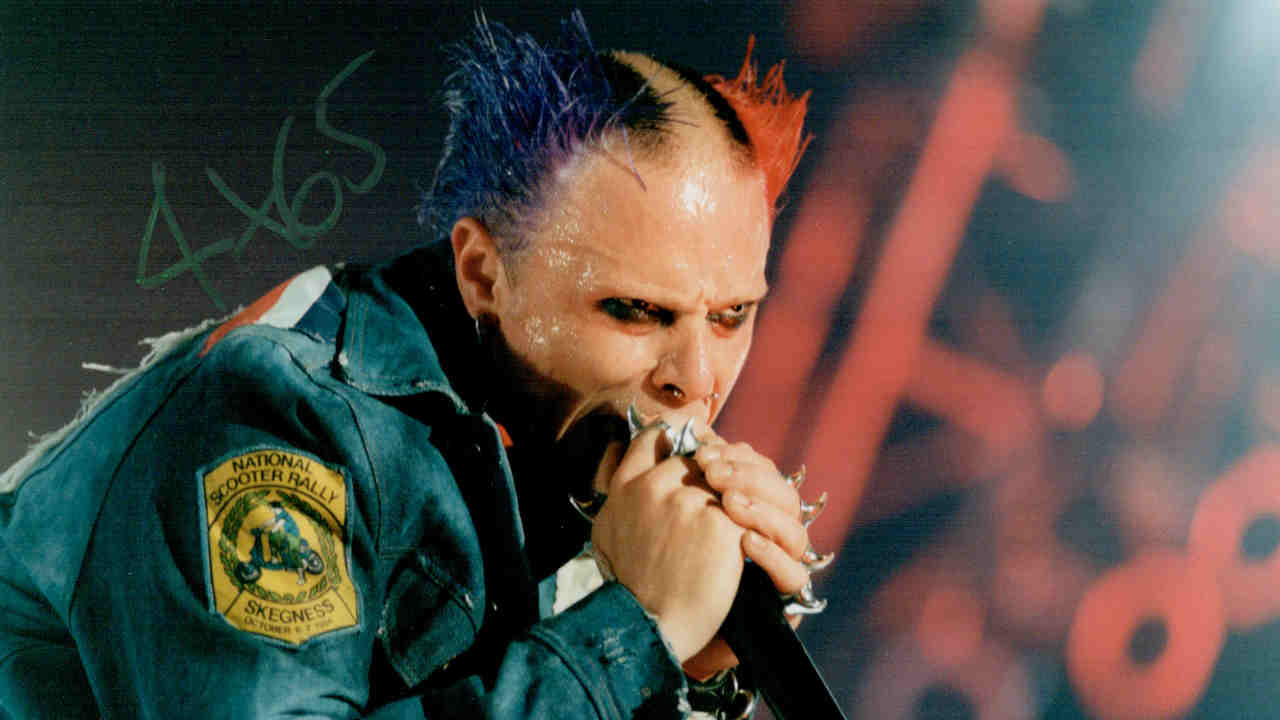The 100 best metal albums of the 90s
The 90s was one of the most important and influential eras in metal history – these are the albums that shaped the decade
Cradle Of Filth - Cruelty And The Beast
Coming up with ideas to follow Dusk… must have been a right old arse-ache, but Cradle Of Filth delivered with Cruelty And The Beast. A concept album based on Hungarian blood countess Elizabeth Báthory, the Filth’s third LP wrapped Dani’s sadistic storytelling into a fully blown narrative; with the legendary Ingrid Pitt voicing Báthory and the epic scope of Bathory Aria tucked into this hour-long bloodbath, it was never going to be anything less than extraordinary.
As perfect as Cradle’s craft is on Cruelty…, its imperfections are what make it even eerier. The production is all over the shop; Sarah Jezebel Deva’s lusciously libidinous tones are akin to, as she kindly put it herself, singing down a toilet and Barker’s drums are tweaked to sound like a tramp pissing on some cardboard boxes, providing a dirtier canvas to paint over rather than the polished pomp of later releases.
Musically it strips away much of the ethereal ambiance of Dusk… in favour of a more direct approach, with Dani’s Eric Cartman grunt entering the mix for the first time and tunes like Beneath The Howling Stars proving that Cradle could thrash with the nasties.
Death - The Sound Of Perseverance
1998’s The Sound Of Perseverance was Death’s final album – and Chuck Schuldiner’s last as a vocalist. Ever the innovator, Schuldiner took death metal into prog territory – a fitting swansong.
Full of awkward time changes and weird keys, it inspired a generation of slightly off-kilter metal musicians who didn't quite fit in to go forth and create with scarce regard for the boundaries of genre or the limitations of a prescribed sound.
Death still don't really get the props they deserve for pushing metal's next generation into experimentation and innovation like few other bands managed.
Korn - Follow The Leader
It was the album that took Korn from metal’s Great Pretenders to international megastars. The OGs of nu metal brought hip hop into the mix on their third album, and the result was the scene’s first true blockbuster.
The chaos – notably a predilection for partying and a lot of cocaine – which surrounded the making of this album is legendary now. Remarkably, in the midst of all this mayhem, a classic album was somehow taking shape, with Jonathan writing some of his deepest and darkest lyrics, like Freak On A Leash and Pretty – the horrific tale of the rape and murder of a baby, prompted by his time working in a coroner’s office.
As the title suggests, Follow The Leader was intended as a raised middle digit to the copyists, proof that Korn couldn’t be left in their own wake.
Marilyn Manson - Mechanical Animals
A radical change of sound and image in which the mighty Marilyn Manson reinvented himself as a goth David Bowie for the 21st century.
That’s the calibre of musicianship we’re talking about here; The Last Day On Earth and Coma White as a couplet could arguably be the band’s most emotional output to date.
As for club-ready, bigger-than-Jesus bangers? The Dope Show. Rock Is Dead. I Want To Disappear. Electronic-spiked, grunge-tinged, ever so slightly glammed-up heavy metal delivered by a Manson on unstoppable form – there’s even dashes of funk on I Don’t Like The Drugs. It’s completely fearless.
The Manson on Antichrist Superstar was a feckless, feral nihilist, but the flamboyant, completely unafraid vocal delivery on Mechanical Animals secured his place within the list of all-time greatest frontmen, on Planet Earth or otherwise. We were all stars in his Dope Show.
Meshuggah - Chaosphere
Ditching the vestiges of thrash for mind-bending technicality, the Swedish alchemists’ third album ushered in a new era for metal.
Upping the heaviness and technicality, New Millennium Cyanide Christ and Neurotica are still undeniably catchy despite sounding like a horde of sentient robotic vikings on a murderous berserker frenzy.
Listen to the end of closer Elastic and see whether your brain will be transported to a higher plane or simply dissolve under the strain.
Opeth - My Arms, Your Hearse
Black metal, death metal and traditional Scandinavian folk were all part of Opeth’s DNA – and few did it better than they did here.
Also wholeheartedly embracing the warm tones and sepia-tinted atmospheres of prog for the first time, Opeth came of age on their third album. The arrival of a stable rhythm section, Martins Lopez and Mendez, certainly helped, but the main contributory factor was the exponential growth in Mikael Åkerfeldt’s songwriting.
From the widescreen whoosh of April Ethereal to the crackling embers of sombre closer Karma and its grand attendant outro, Epilogue, these songs sizzled with intelligence and soul, as Opeth audibly transcended their death metal roots and entered an entirely new musical world that they would effortlessly claim as their own.
And, in the fiery barrage of Demon Of The Fall, the Swedes had created their first bona fide live anthem; a timeless piece of metallic mastery that continues to be a highlight of Opeth gigs today.
Monster Magnet - Powertrip
For the most part, stoner rock is seen as the province of the more weed-friendly US west coast. New Jersey’s Monster Magnet had their own, more diesel-fuelled approach, and Powertrip was the first record to prove that stoner music could sell – in its millions.
Dave Wyndorf and co. didn’t so much tone down their excessive jam-led style as allow it freedom within defined songs. Crop Circle, Space Lord and Goliath And The Vampires are brilliant examples of how to create a sense of adventure.
Some may prefer the band’s earlier, more experimental albums, but Powertrip is more exhaustive. It's also the point at which Wyndorf’s long-game vision came to fruition: this was epic space rock with Las Vegas bling.
Refused - The Shape Of Punk To Come
Refused only reached their creative peak when they hit the skids.
By 1998 – as portrayed in the documentary Refused Are Fucking Dead – this fine but fairly unremarkable Swedish hardcore band were burnt out and disillusioned by months on the road playing to tiny audiences.
And so, as a final raised finger to the world before they broke up, they created the thrillingly audacious The Shape Of Punk To Come, smashing together smart political polemic, punk rock, metal, poetry, jazz (the title is a nod to Nation Of Ulysses’ The Sound Of Jazz To Come, itself a reference to Ornette Coleman’s The Shape Of Jazz To Come), earsplitting noise, techno and a whole lot of righteous fury.
It was, at the time, a truly unique game-changer. It’s a testament to its brilliance that, after the band split, its legend grew until they eventually returned in 2012 to a worldwide hero’s welcome. Utter genius.
Rob Zombie - Hellbilly Deluxe
White Zombie were 90s players, but once Rob went solo, everything was amped up to make the definitive 90s rock club floor-filler album.
Much to the singer’s surprise and delight, his debut solo record out-sold all of White Zombie’s albums and remains his best-selling release to date, producing two hit singles – Dragula and Living Dead Girl – and establishing him as a successful artist in his own right.
As the mainman himself pointed out, “There’s not a long track record of people having more successful solo careers after leaving bands, especially in the hard rock field. It’s pretty much only Ozzy.” Well, Zombie followed in the footsteps of The Prince Of Darkness and smashed it out the park.
System Of A Down - System Of A Down
Even alongside the gang of misfits that came of age in the unruly era of nu-metal, System Of A Down always stood out from their peers.
Just as the genre was getting predictable, it took four batshit-crazy Armenian-Americans to rewrite the rulebook with help from the legendary Rick Rubin.
Indeed, their eccentric mix of prog, thrash, hardcore, funk, rap and Middle Eastern music took the best elements of the sub-genre – angular riffs, odd time signatures and manic vocals – and twisted them into something even more strange and compelling.
Buy on Amazon | Listen on Spotify
The Dillinger Escape Plan - Calculating Infinity
When Napalm Death released the album Scum in 1987 many of the music press declared that, in terms of extremity, music had reached its peak. And it was a widely held view until, on September 28th 1999, The Dillinger Escape Plan rewrote the rules once more with Calculating Infinity.
Mathcore was the sound of metal being twisted into startling new shapes, and few did it better than DEP on their debut album. Playing within the same scene that gave the world other such progressive, metallic hardcore luminaries as Converge, Botch and Poison The Well, the band increased the sonic extremities of the music even further, merging warp speed, jazz-tinged, scattershot riffs and broken electronic beats into a hardcore template.
Even today Calculating Infinity sounds truly thrilling and utterly unlike anything else, from the opening two and a half minute breakneck, visceral thrill of Sugar Coated Sour to the title track’s brooding, seething but restricted instrumental.
Buy on Amazon | Listen on Spotify
Emperor - IX Equilibrium
A transitional album, IX’s stormfronts of prog and death never stopped it being a work of imperious grandeur in its own right
Previous to this record, Sweden’s Emperor were the kind of band reserved for people who never got laid or men who had bald spots and hair halfway down their back.
Strange, then, that 20 years later IX Equilibrium is viewed by those in the know as being An Important Event. Which, distilled, means this: Without Emperor there would probably be no Opeth and dark metal would likely still be daft.
This album was the first marker that extreme was evolving.
Limp Bizkit - Significant Other
Fred Durst was the brat-prince of nu metal, and this was his crowning glory.
Taking Three Dollar Bill, Y’all$’s abrasive racket and mollycoddling/expanding it (delete as appropriate to your bitterness), Bizkit transformed into a juggernaut.
The Durstisms came thick and fast, our red-capped hero saying “yeah!” and “bab-eh!” instead of rapping, enlisting Method Man to take care of that on N 2 Gether Now. The ‘Realised that I’m worth more than that’ in No Sex is essentially Stacy’s Mom by Fountains Of Wayne but 10 times better, Don’t Go Off Wandering’s got gorgeous strings courtesy of Borland’s brother Scott and the nasty, full-frontal riffing of I’m Broke is an unused gem from Three Dollar Bill, Y’all$.
The hits still rule – even a guy in a Darkthrone hoodie knows Break Stuff – and the Jonathan Davis/Scott Weiland guest spots on Nobody Like You have aged gloriously. This was the late 90s in 15 songs.
Metallica - S&M
Metallica went where no metal band had gone before and teamed up with a symphony orchestra for their take on Last Night Of The Proms with anger issues. An inspired collaboration which leant even more ‘sturm und drang’ drama to their most epic and enthralling songs.
The Outlaw Torn, Sad But True and Bleeding Me sound phenomenal here, and new song No Leaf Clover is an absolute beast. Those privileged to see this recorded, or to witness the subsequent performances in Berlin, New York or Las Vegas, will ever forget it.
It's also a great album to prove the point that anyone who claims that Metallica have nothing worth listening to post-'Black' album is a fucking idiot. In fact, the band’s fearless risk-taking and sense of adventure post-1991 arguably makes their ‘second act’ all the more more interesting – albeit their quality control nose-dived significantly.
Nine Inch Nails - The Fragile
A sprawling double album that owed as much to Pink Floyd’s oblique soundscapes as techno-metal pummelling.
More nuanced, but no less harrowing than its predecessor, The Fragile can be viewed as a companion piece to The Downward Spiral, chronicling one man’s (ultimately doomed) quest to find a sense of place amid the chaos of modern life.
Its isolationist anthems are by turns stark and disquieting (The Great Below, La Mer) or pained and desperate (The Day The World Went Away, We’re In This Together), presenting a fractured but fascinating narrative arc. Nine Inch Nails’ first US No.1 album, it’s a challenging and indulgent collection, but an undeniable artistic triumph.
Trent: miles ahead of the pack… again.
Korn - Issues
After redefining what heavy music was during the first half of the 90’s, Korn had become genuine rock stars, with all the excess and trappings that go with it, after Follow The Leader’s incredible success.
It was a tough spot for a band that had gained notoriety through such savage music and such bleak catharsis to now be sharing spots on charts and magazine covers with Britney Spears and The Backstreet Boys.
Notoriously divisive and lukewarmly received by the their fanbase at the time, Issues still proved that Korn could still bring the downtuned, tormented, black-hearted hits among their rising celebrity.
Opeth - Still Life
Mikael Åkerfeldt busted Opeth’s dark, insular sound wide-open.
Opeth's fourth album moved further away again from their death metal roots, and into a more progressive sound. It also showed evidence of Mikael’s maturing skills as a composer and his band’s increasingly powerful identity.
It was the second time the band had gone for an overall concept, which they’d first done a year earlier with My Arms, Your Hearse. It was also the start of an ongoing relationship with Travis Smith, who has done the artwork for every subsequent Opeth album.
Suddenly, a prog-metal future opened up in front of them.
Rage Against The Machine - The Battle Of Los Angeles
RATM’s third studio album, The Battle Of Los Angeles, came out in 1999. That means it’s been over 20 years since we last heard new original material from the band. Yet here we are, still talking about them, two decades later.
What’s even more impressive is how fresh, vital and relevant their music still sounds, and The Battle Of Los Angeles was the moment the quartet perfected their art. The first three songs (Testify, Guerrilla Radio and Calm Like A Bomb) in particular are absolutely unstoppable, whilst the record as a whole serves as a lasting reminder of the groundbreaking music RATM created.
The agit-metallers’ third album was their confrontational peak. Over 20 years on, we need them back more than ever – which makes their recently announced reunion all the more welcome.
Slipknot - Slipknot
In 1999, nine men from Iowa gatecrashed the nu metal party with their ferocious, self-titled album.
In retrospect, Slipknot’s 1999 self- titled album was a major change in metal. Until then, bands were still caught up in the fallout from grunge, and while the lightweight pop-metal of bands such as Korn, Limp Bizkit and others were keeping hard rock alive and on permanent rotation on MTV, there was nothing outside of the underground to challenge the old guard of Slayer, Metallica and Megadeth, nothing with any real substance.
By the time Slipknot was finished, everyone else seemed a bit silly by comparison.
Testament - The Gathering
So the ‘90s was a thrash wasteland, was it? Two years before Slayer came back all guns blazing with God Hates Us All, Testament refined their death/thrash fusion.
Featuring death metal luminaries Steve DiGiorgio and James Murphy on bass and lead guitar, and none other than Dave Lombardo behind the kit, The Gathering was a precision strike to the senses.
Testament’s eighth album forced those who wrote them off as a thrash metal relic to eat their words.
Sign up below to get the latest from Metal Hammer, plus exclusive special offers, direct to your inbox!
Founded in 1983, Metal Hammer is the global home of all things heavy. We have breaking news, exclusive interviews with the biggest bands and names in metal, rock, hardcore, grunge and beyond, expert reviews of the lastest releases and unrivalled insider access to metal's most exciting new scenes and movements. No matter what you're into – be it heavy metal, punk, hardcore, grunge, alternative, goth, industrial, djent or the stuff so bizarre it defies classification – you'll find it all here, backed by the best writers in our game.

